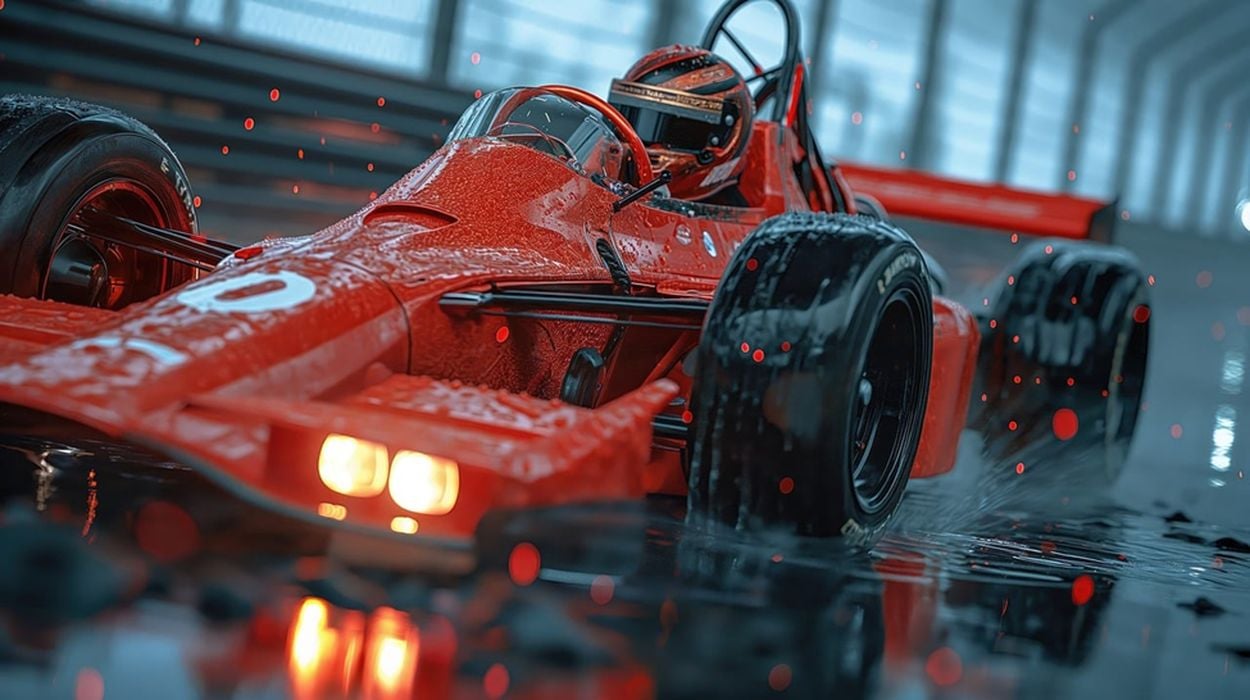
Charles R. Goulding and Kellen Coleman discuss the recent Formula One Grand Prix in Las Vegas and the successful integration of 3D printing technology.
The recent Formula One Grand Prix in Las Vegas marked not only a historic return to the city’s streets but also a triumphant crescendo to a remarkable era of growth under the ownership of Liberty Media. Max Verstappen’s victory, coupled with the glitzy opening ceremony, showcased the future event that F1 has become. Yet, beneath the surface, the fusion of Liberty Media’s ownership strategy and the transformative power of 3D printing technology is steering the motorsport industry toward unprecedented heights, especially in the United States.
Max Verstappen’s early skepticism about the Vegas event being “99 percent show, 1 percent sporting event” reflected the challenges of balancing entertainment with the core ethos of competitive racing. However, Liberty Media’s ownership has proven instrumental in steering F1’s expansion into the lucrative American market. The addition of races in Miami, Austin, and the triumphant return to Las Vegas, alongside plans to revisit China, underscores the impact of Liberty Media’s vision on the sport’s global footprint.
The opening ceremony, featuring performances by global icons, served as a grand introduction to a race that has evolved beyond its traditional roots. In tandem with this F1 expansion, 3D printing has quietly but significantly revolutionized the F1 landscape. Liberty Media’s investment in F1 coincides with a broader commitment to innovation, and 3D printing is emerging as a key player in shaping the future of the motorsport industry. A crucial application of 3D printing in F1 lies in the domain of aerodynamics. The sport, defined by split-second victories and precision engineering, relies on teams harnessing the power of 3D printing to craft bespoke aerodynamic components. Front wings, diffusers, suspensions, and other critical parts are meticulously designed and produced using 3D printing, allowing teams to fine-tune their vehicles for maximum performance on the track.
The challenges faced during the Vegas Grand Prix’s build-up, such as a loose drain cover causing an accident in practice, underscore the need for rapid problem-solving. 3D printing enables teams to swiftly create replacement parts on-site, minimizing downtime and ensuring that the show goes on with minimal disruptions. This agility in response is a testament to how technology supports the dynamic and unpredictable nature of F1 racing. Beyond enhancing performance, 3D printing plays a pivotal role in F1’s commitment to sustainability. The massive investments in infrastructure, including paddocks and tracks, are now incorporating environmentally friendly materials and processes enabled by 3D printing. Lightweight yet durable components produced through 3D printing contribute to overall weight reduction, promoting fuel efficiency and aligning F1 with global sustainability goals.
The logistical demands of a global racing calendar pose significant challenges for F1 teams. Here, 3D printing shines as a logistical hero, allowing teams to manufacture spare parts on demand. This not only reduces the need for extensive inventories but also loosens the environmental impact associated with traditional manufacturing and shipping methods.
The Research & Development Tax Credit
The now permanent Research and Development (R&D) Tax Credit is available for companies developing new or improved products, processes and/or software.
3D printing can help boost a company’s R&D Tax Credits. Wages for technical employees creating, testing, and revising 3D printed prototypes can be included as a percentage of eligible time spent for the R&D Tax Credit. Similarly, when used as a method of improving a process, time spent integrating 3D printing hardware and software counts as an eligible activity. Lastly, when used for modeling and preproduction, the costs of filaments consumed during the development process may also be recovered.
Whether it is used for creating and testing prototypes or for final production, 3D printing is a great indicator that R&D Credit eligible activities are taking place. Companies implementing this technology at any point should consider taking advantage of R&D Credits.
Conclusion
The synergy between Liberty Media’s ownership strategy and the integration of 3D printing technology has propelled Formula One into a new era of innovation and global prominence. As the sport continues to captivate audiences in the United States and beyond, the subtle but powerful influence of 3D printing ensures that F1 remains at the forefront of technological progress. Liberty Media’s bold vision, coupled with the silent revolution of 3D printing, is setting the stage for Formula One’s continued ascent in the world of motorsport.
